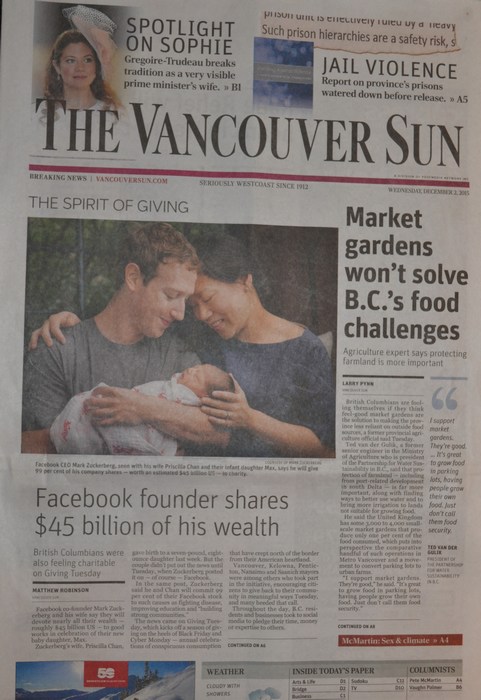VIDEO: Partnership for Water Sustainability’s Ted van der Gulik illustrated application of “Agricultural Water Demand Model for BC” for food security planning at 2015 Feast AND Famine Workshop
Solutions and Tools for Building Water-Resilient Communities
Western North America may be crossing an invisible threshold into a different hydro-meteorological regime. Annual volumes of water entering and exiting regions are not necessarily changing. Instead, what is changing is how and when water arrives – it is flood and drought!
Adaptation to a Changing Climate
In December 2015, the Feast AND Famine Workshop addressed this over-arching question: What should we expect and what can we do to build “water-resilient communities”?
The program comprised four modules that were cascading – from high-level visioning to ground-level applications. Adaptation to a changing climate was a unifying theme. Both the urban and agricultural perspectives were represented.
Will There Be Sufficient Water for Agriculture in the Decades to Come?
In Module C, Ted van der Gulik explained the complexities of water supply for agricultural lands in the Fraser River delta and how climate change will affect water demand to grow our food.
 In providing a provincial overview of agricultural water use, Ted van der Gulik explained how the Agricultural Water Demand Model is being used in decision-making by local governments. The model also provides the technical foundation for the Province’s online Agriculture Irrigation Licencing Calculator, anticipated to be operational in Spring 2016.
In providing a provincial overview of agricultural water use, Ted van der Gulik explained how the Agricultural Water Demand Model is being used in decision-making by local governments. The model also provides the technical foundation for the Province’s online Agriculture Irrigation Licencing Calculator, anticipated to be operational in Spring 2016.
To Learn More:
To download a PDF copy of the PowerPoint presentation by Ted van der Gulik, click on Fraser Valley Agriculture & Water Demand – How It Could Change in the Future
What About Food Security?
“Agriculture is a large fresh water user and the demand for water will only increase as summers get longer, hotter and drier,” he stated. “BC needs 215,000 hectares of irrigated agriculture to feed our current population. The ~28,000 irrigated hectares in the Lower Mainland (13,000 in Metro Vancouver plus 15,000 in the eastern Fraser Valley) compares with ~20,000 in the Okanagan Valley.”
Irrigation Potential
“With careful planning, the irrigated area in the Lower Mainland could be increased to 69,000 hectares at buildout. From both the food security and resiliency perspectives, this underscores the strategic value of agricultural land in the Fraser Valley.”
Ted van der Gulik provided the Vancouver Sun with a quotable quote for its headline story when he said: “I support market gardens. They’re good. It is great to see residents grow their own food in urban areas. However, market gardens do not provide a significant source of food for our provincial needs – don’t sell them as being part of the provincial food security plan.”
To Learn More:
To read the front-page story published in the Vancouver Sun, click on At the 2015 Feast AND Famine Workshop: “Market gardens not the answer to B.C.’s food challenges,” said Ted van der Gulik, Partnership for Water Sustainability in BC
And to learn what else was presented, visit the homepage for the Feast AND Famine Workshop by clicking on this link: https://waterbucket.ca/cfa/category/on_the_ground_changes-in-british-columbia/2015-feast-and-famine-workshop/



